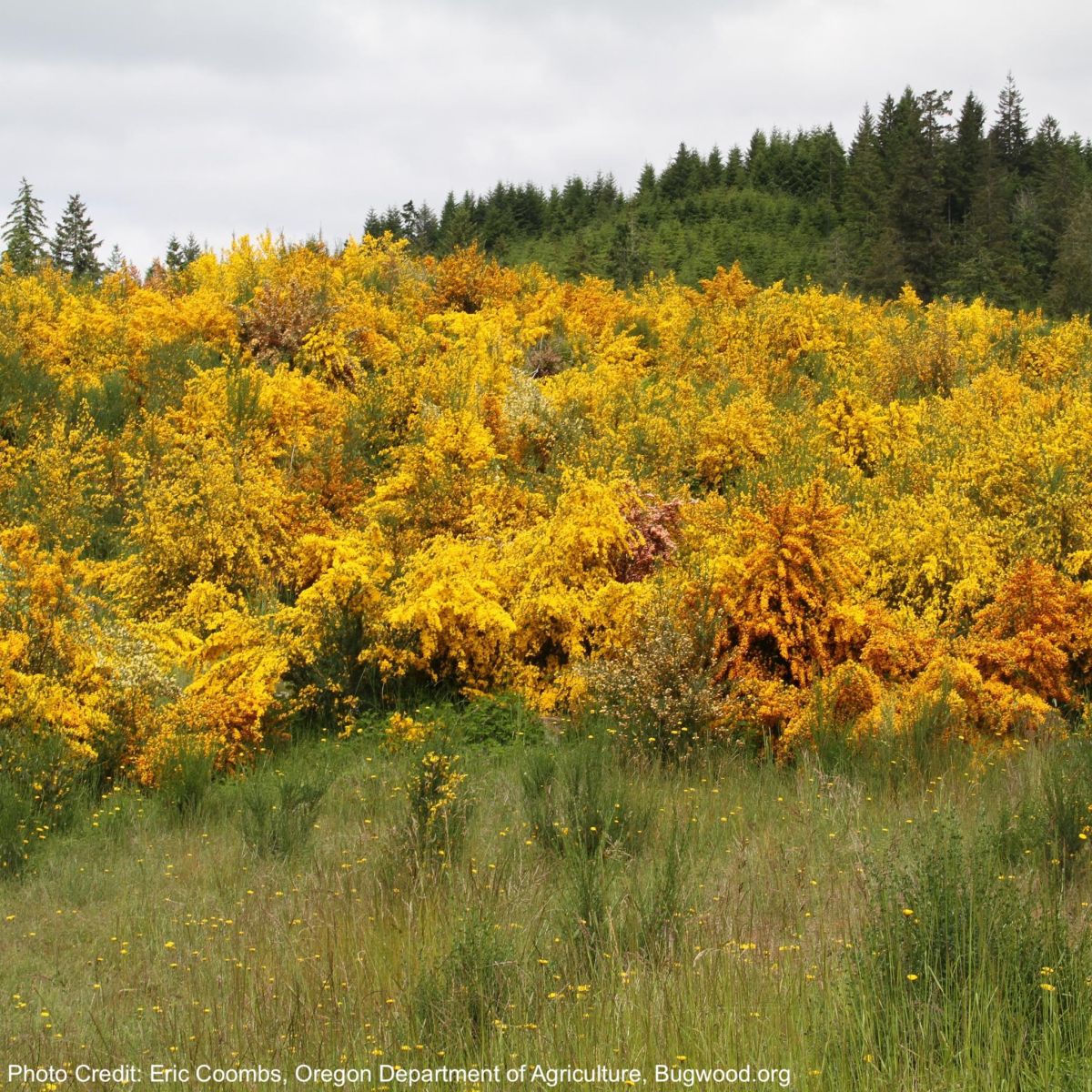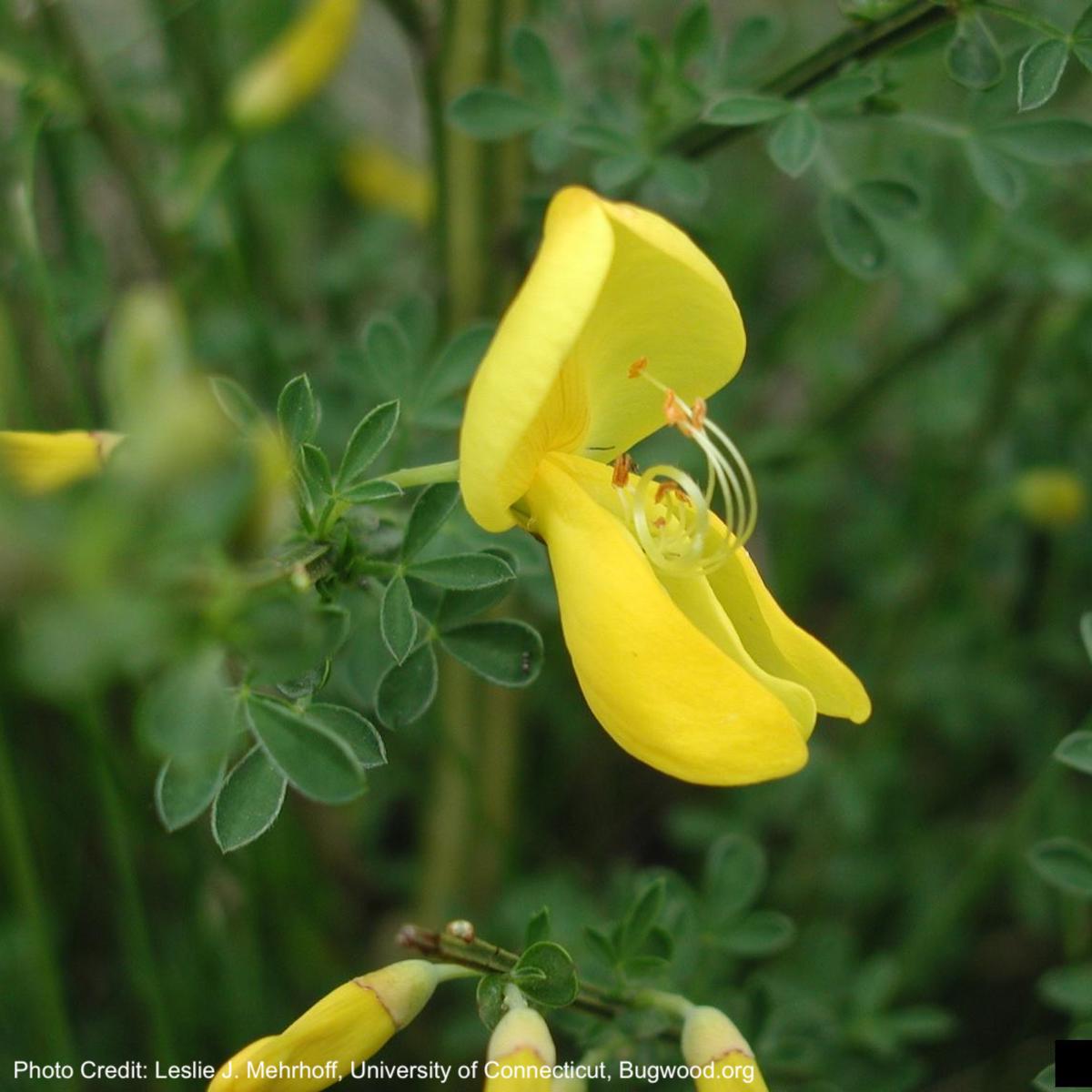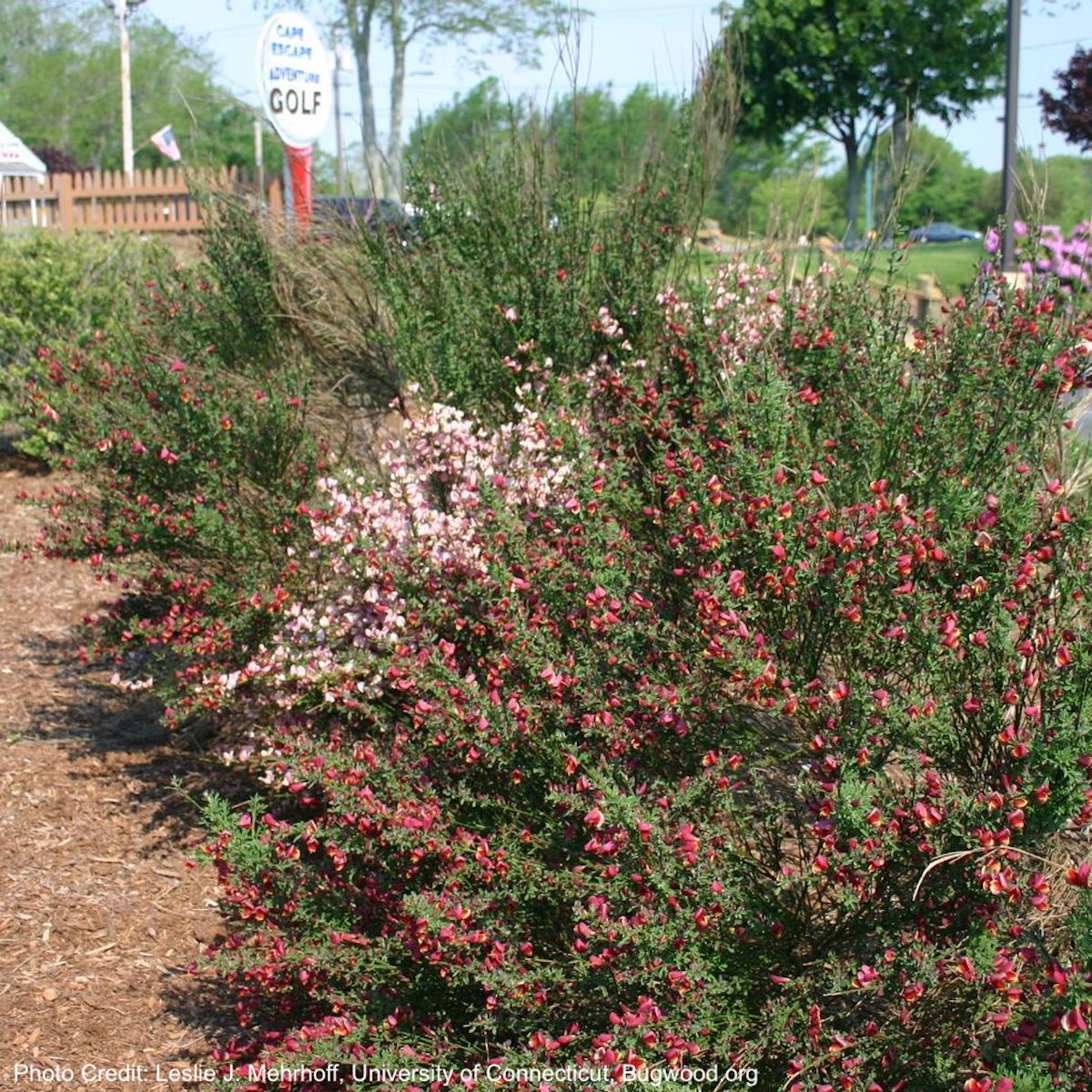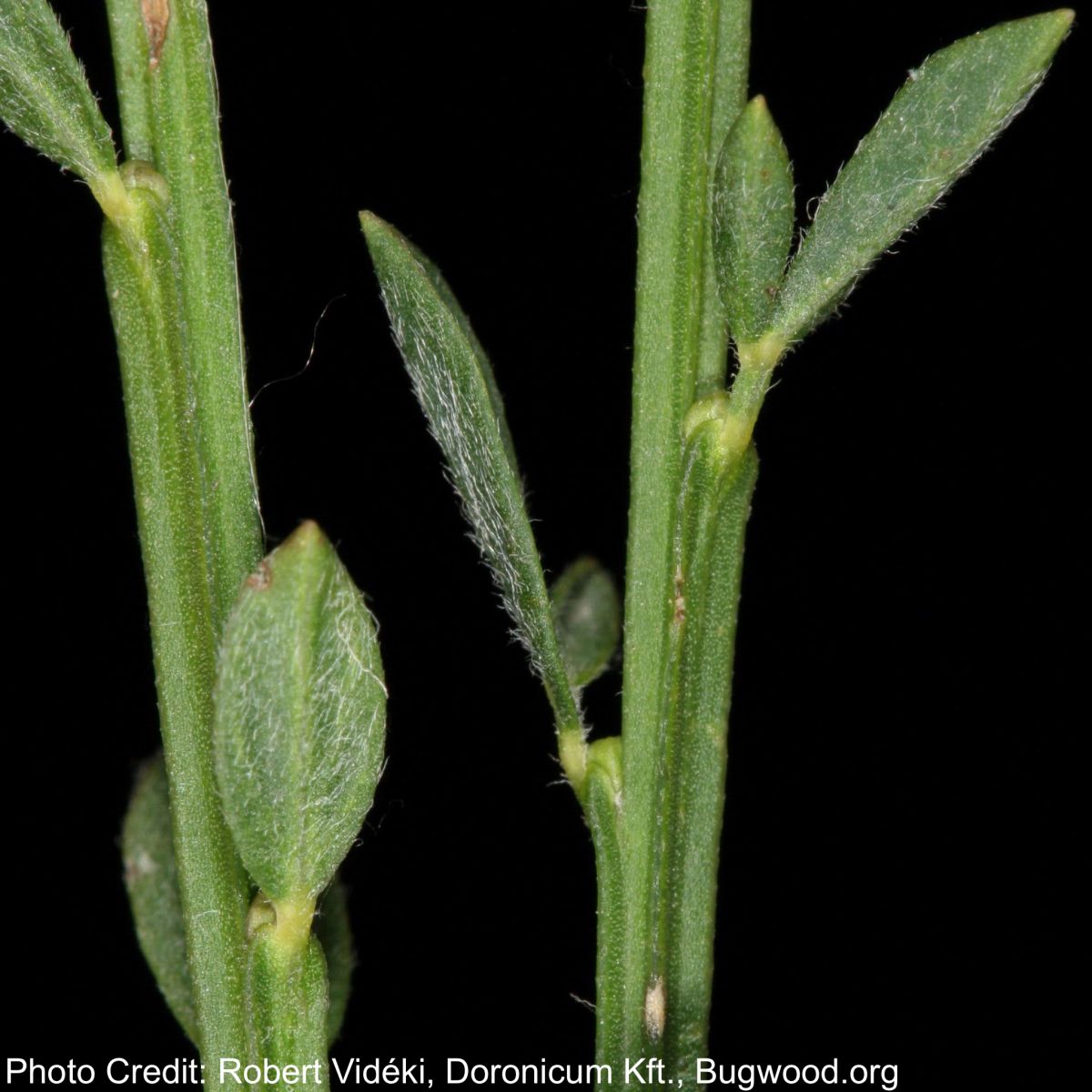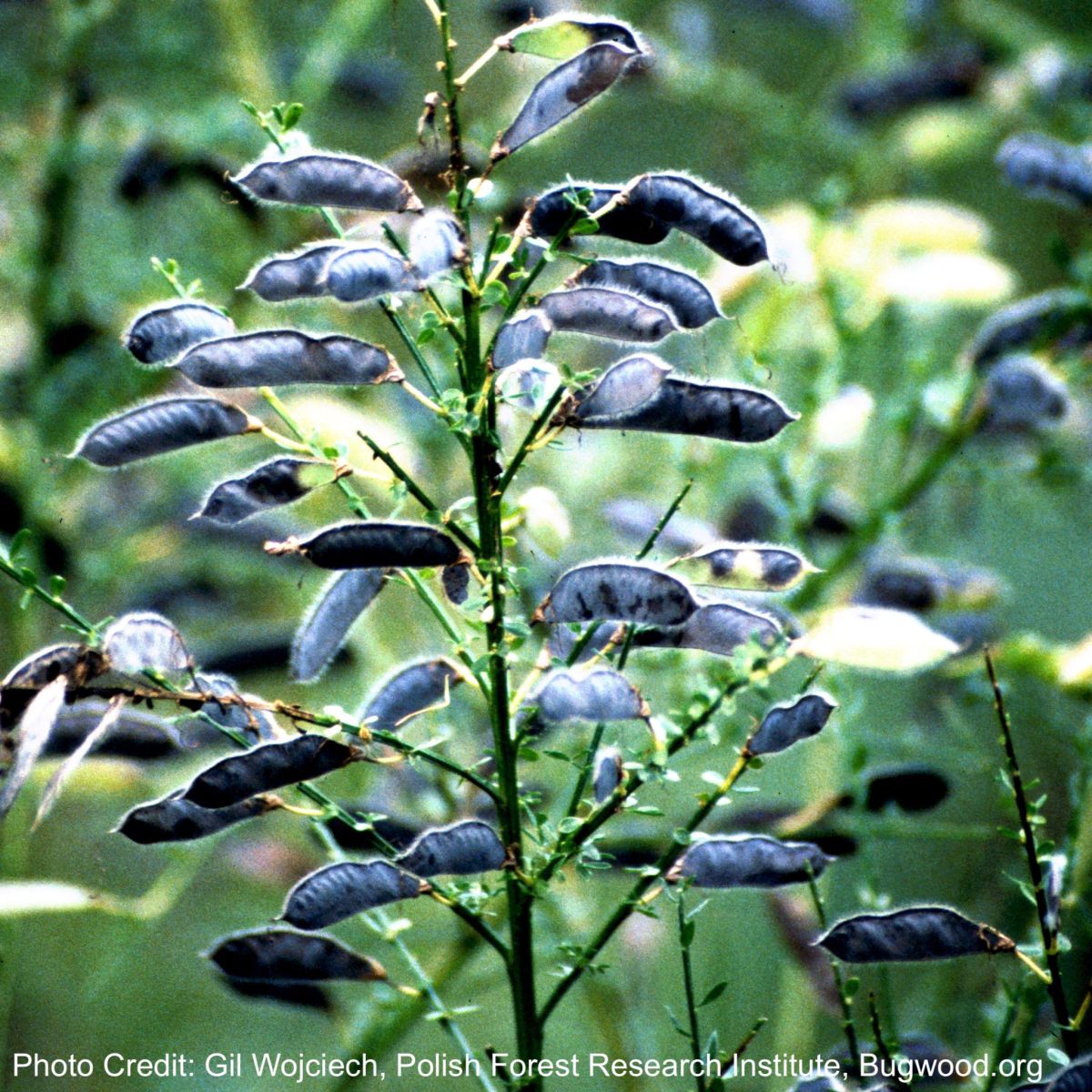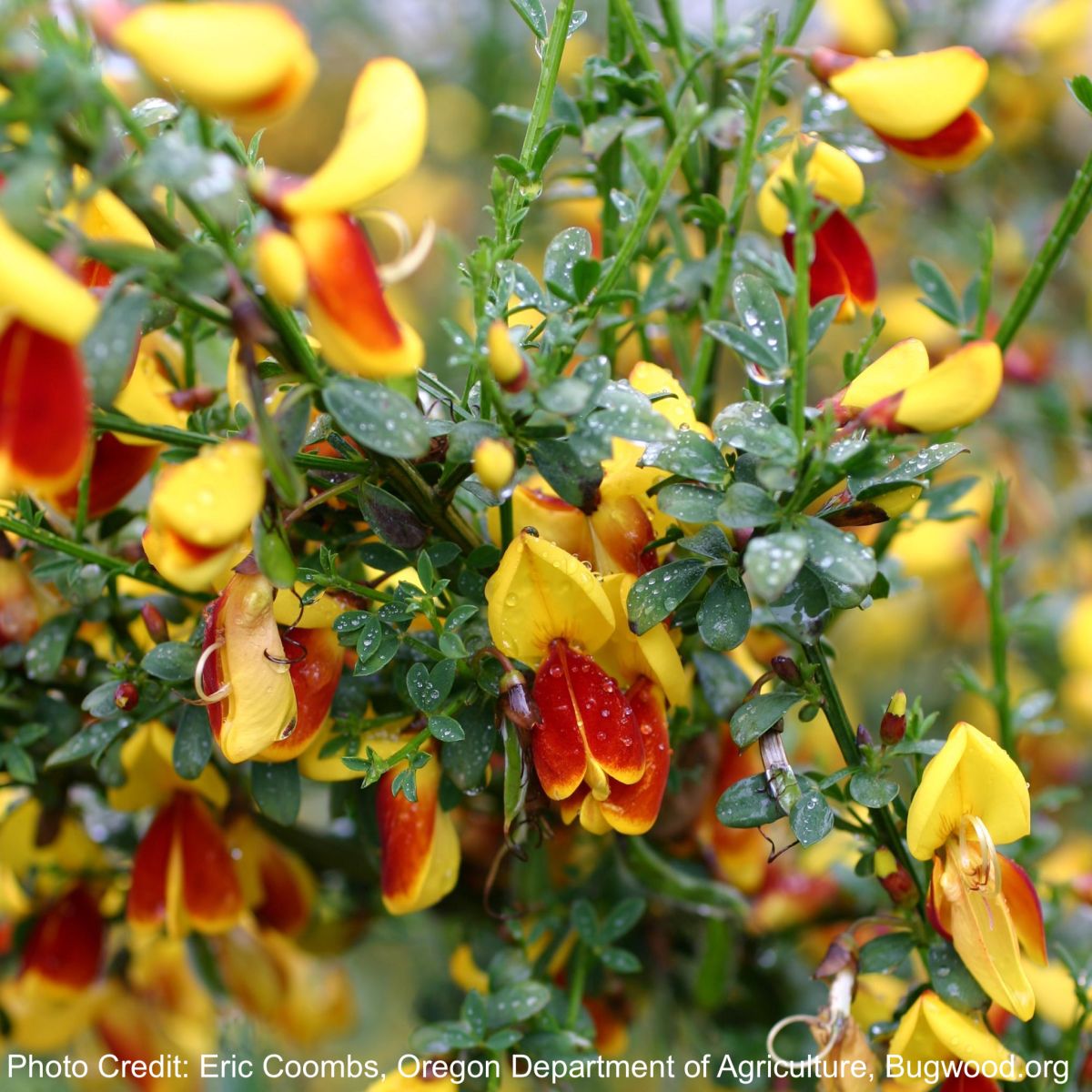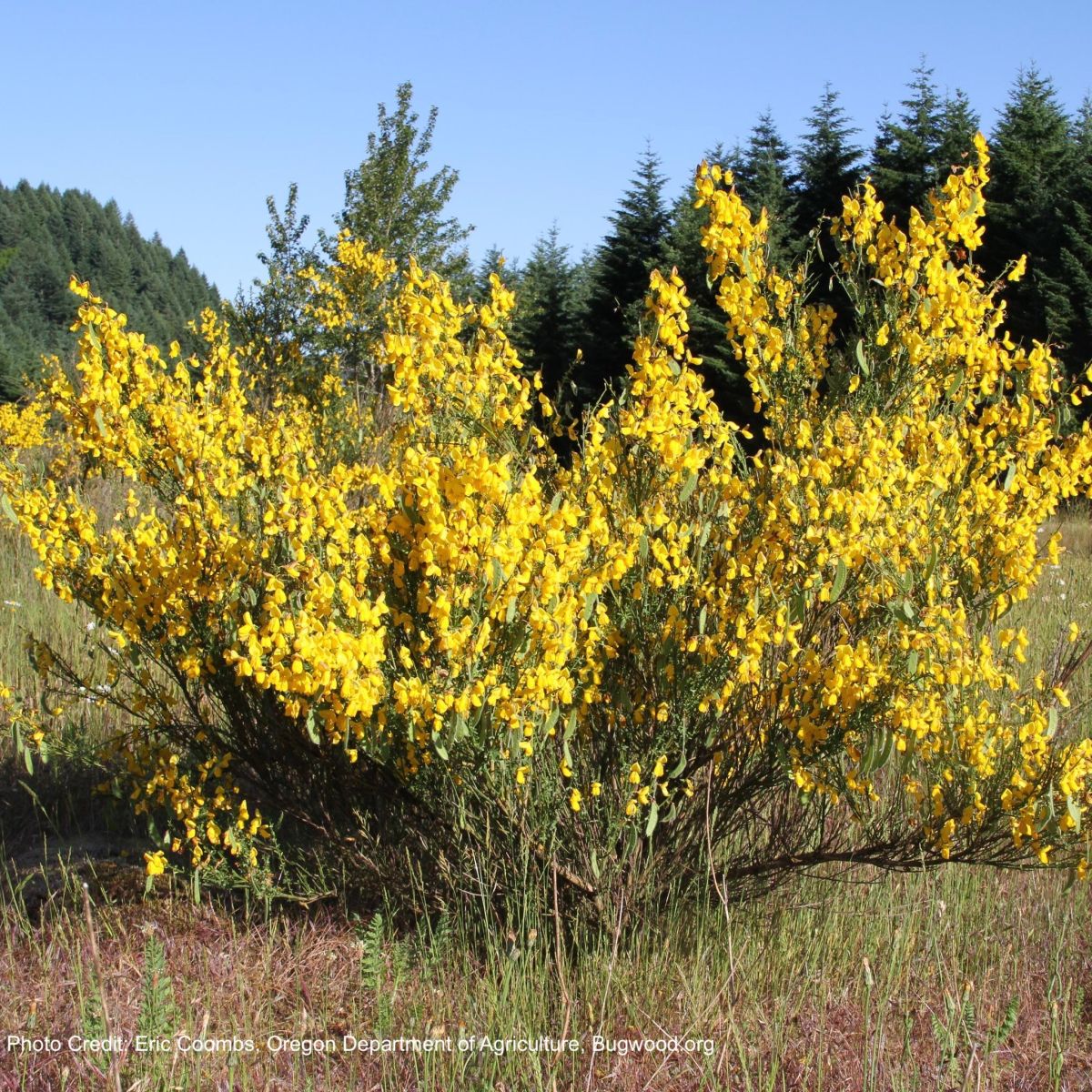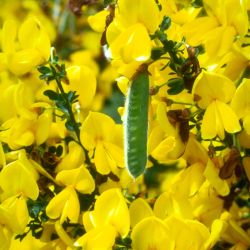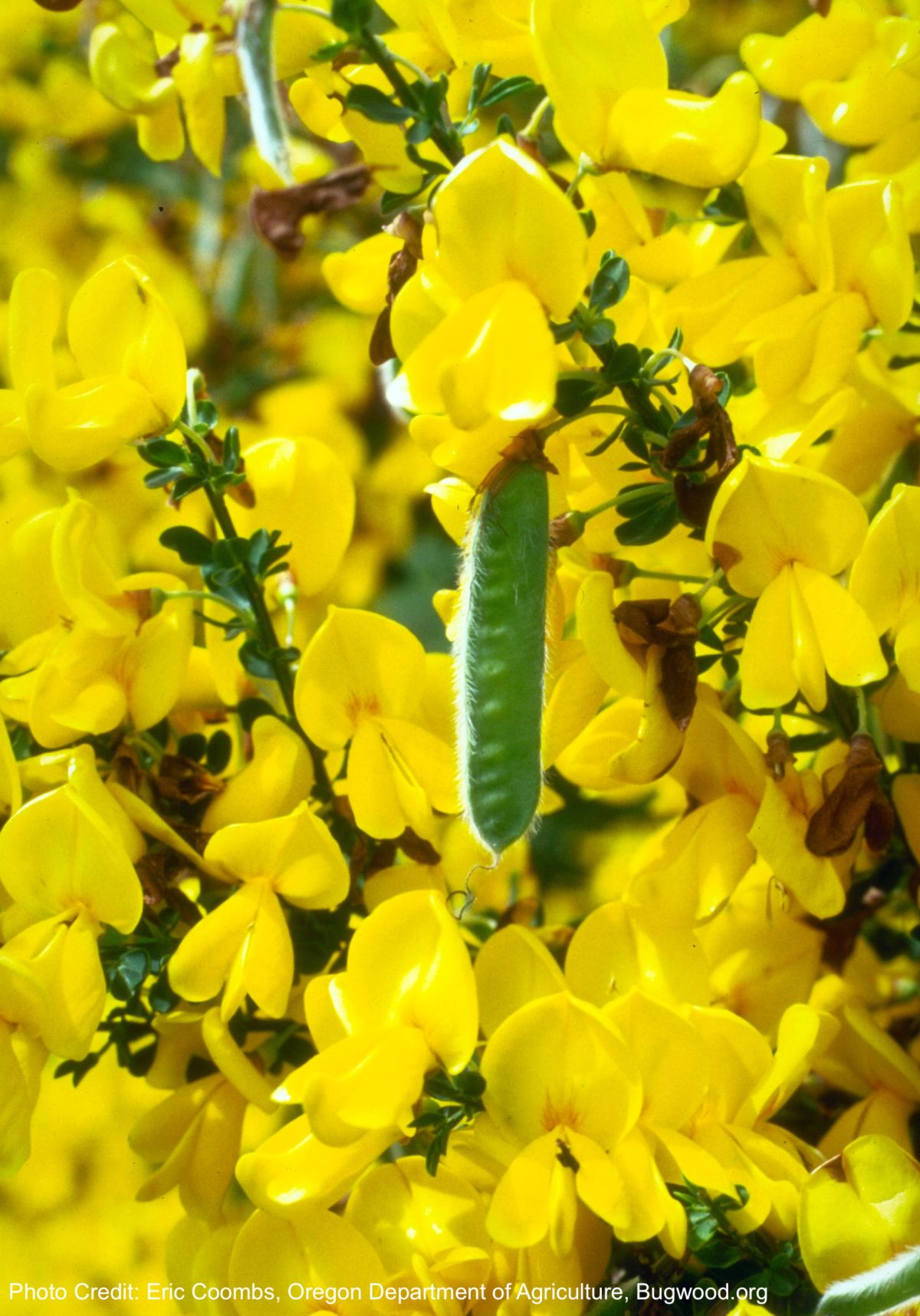
Priority: Eradicate
General: A perennial shrub from the pea family.
Height: 1 – 3 meters
Flowers: Yellow, pea-like flowers arising from the axil (intersection of stem & leaf). Colour is usually yellow but sometimes purple-tinged or yellow with red markings. 2cm long.
Leaves/Stems: Stems woody, erect, & branched. Twigs angled, green, & somewhat hairy when young, losing the hair (glabrous) later on. Leaves alternate. Leaves on lower branches are stalked & palmately compound with 3 leaflets. Leaves on upper branches are unstalked & simple, egg-shaped to oblong, hairy when young but later glabrous. 5 – 20 mm long.
Root: Deep, branched taproot.
None.
Gorse (Ulex europaeus) also invasive but is thorny with inch-long spines.

St. John’s Wort (Hypericum perforatum) another invasive. Only 1 meter high. Flowers are not pea shaped but rather 5 identical petals with many prominent yellow stamens.
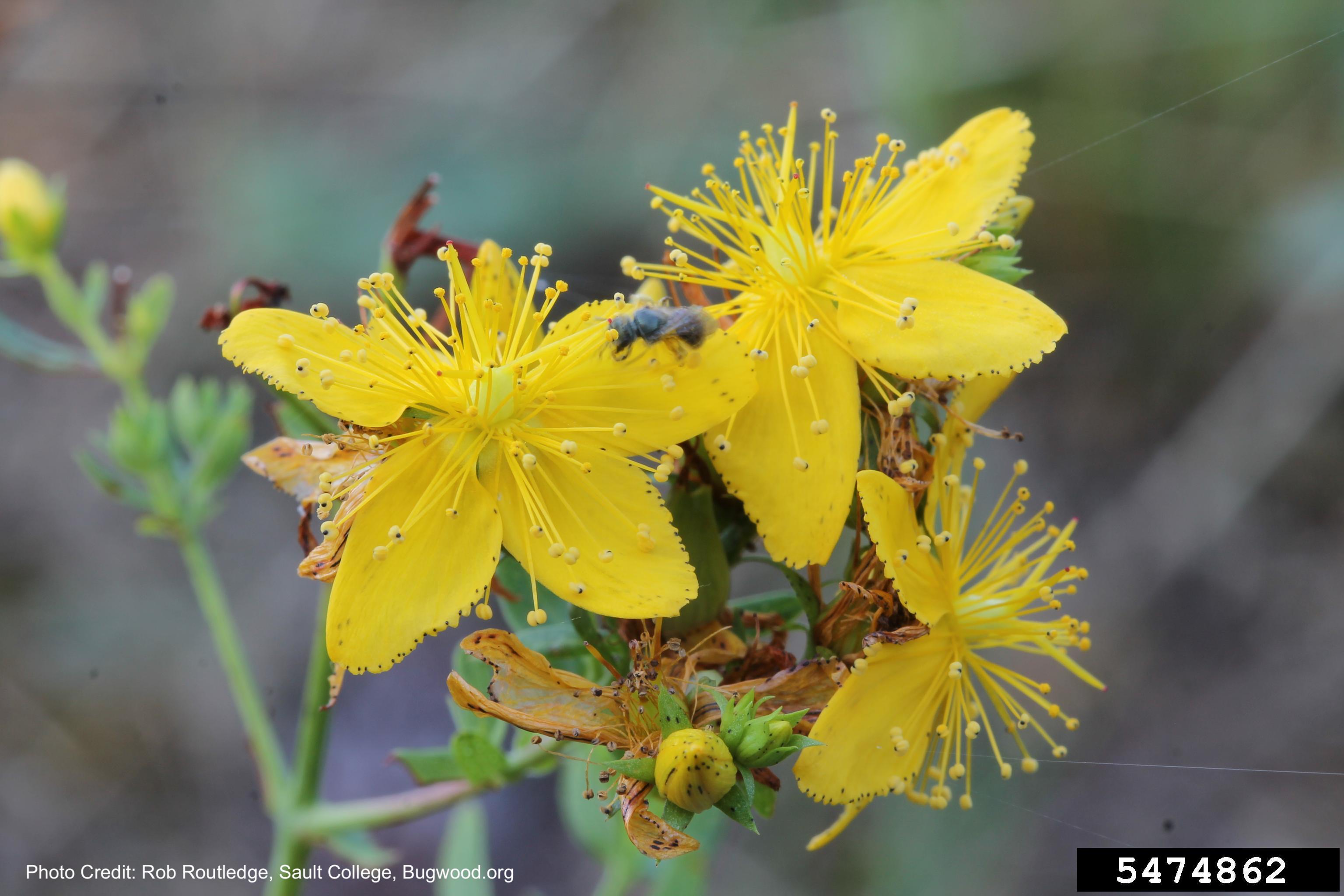
Spanish Broom (Spartium junceum) also invasive. Note the difference in stems: spanish broom stem is round; Scotch broom stems are rigid.
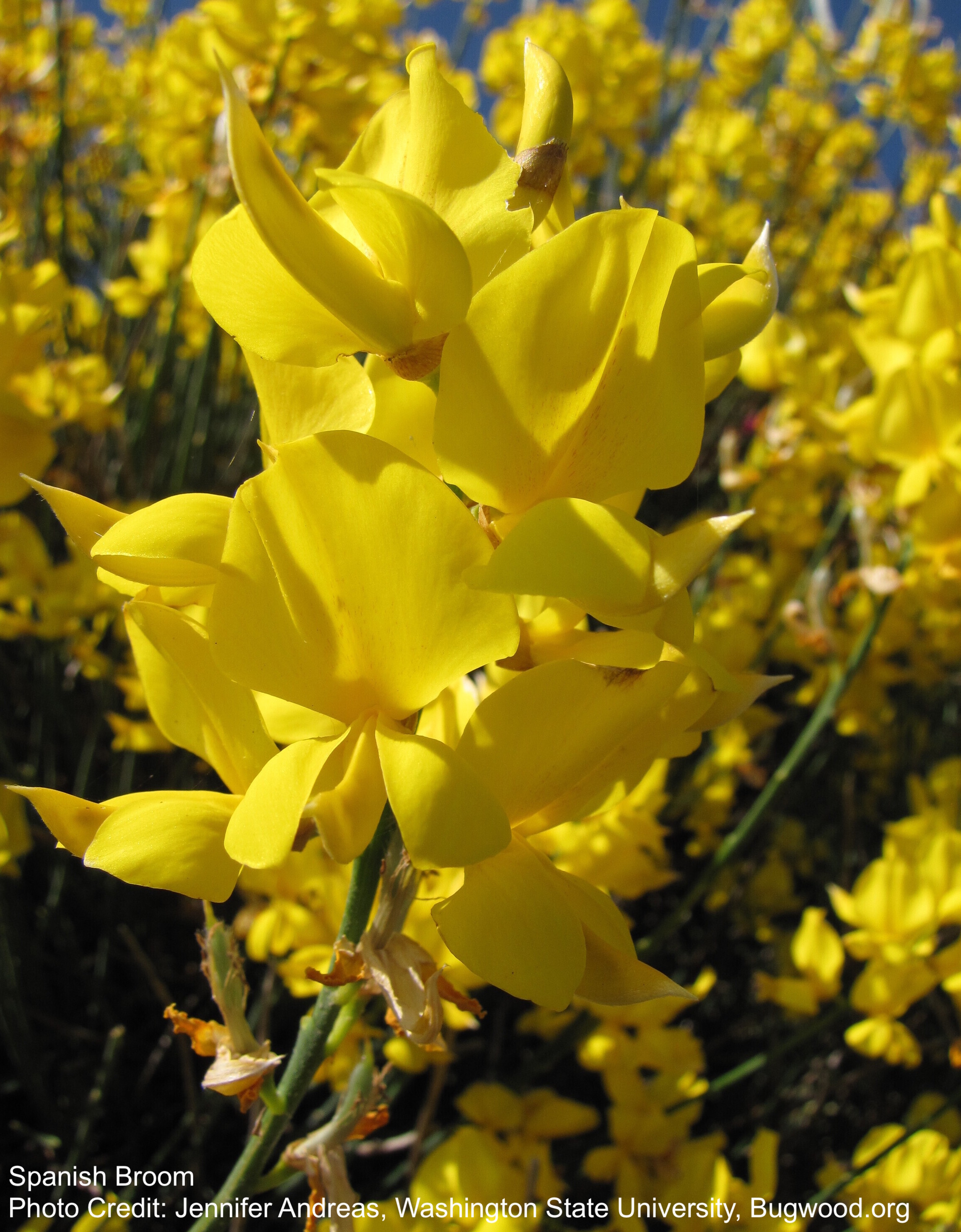
Huckleberry (Vaccinium spp.) - native. This can sometimes be confused with Scotch Broom in the fall and winter when the branches are bare. Huckleberry leaves are larger & rounder. Flowers are white or pink.
Image Link: Huckleberry, E-Flora
Deciduous Yellow Azalea (Rhododendron luteum): - garden plant. This azalea flower is yellow but funnel-shaped and looks more like a honeysuckle.
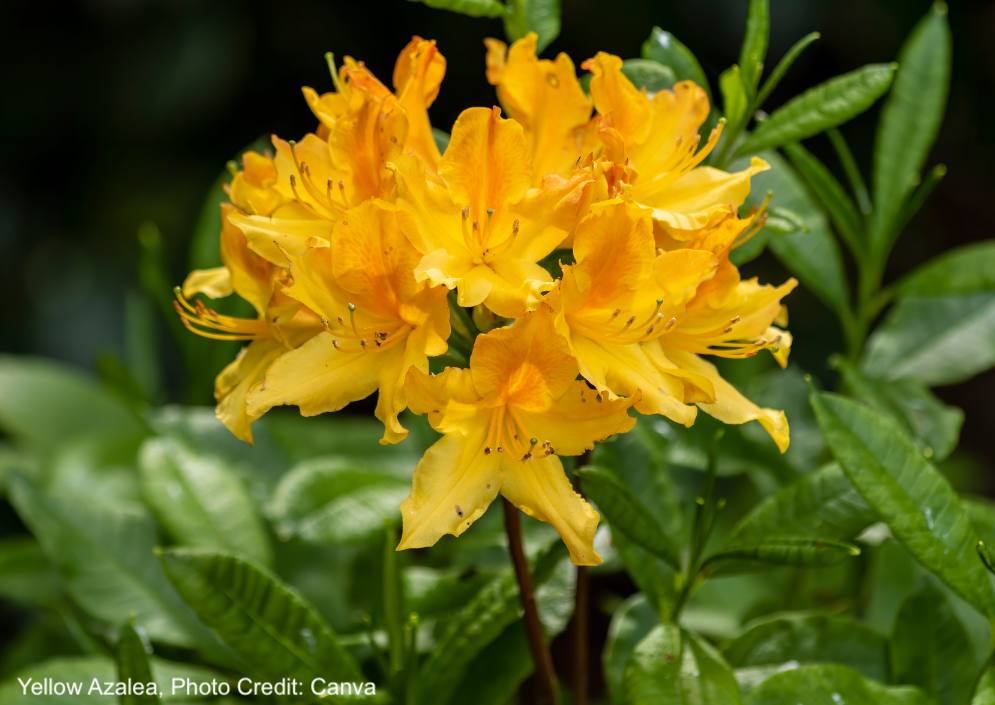
Where did it come from? Originates from Europe & Asia. Was introduced to the eastern coast of United States and has now spread all the way to the west coast of Canada.
Where does it grow here? Grows in dry, sandy soils in full sun.
Reproduction: Reproduces by seed & lateral bud growth.
When does it grow, flower & seed? Flowers in May & early June.
Spreads By: Seeds spread quickly via water & along roadways. Mature plants produce up to 3500 pods with 5 – 12 seeds in each pod. Also spreads on vehicles and machinery to new disturbed areas.
Plant Type: Perennial shrub from the pea family.
- Shades out understory species.
- Increases the intensity of wildfires.
- Obstructs sightlines along roads.
- Crowds out native plants that animals depend on.
- Toxic to livestock.
- Aggressive spreader, takes over rangelands & decreases crop yields.
- Limits movement of large animals.
- Alters nitrogen composition of soil.
- Review your property regularly for this species.
- Treatment Cut broom IN BLOOM, at ground level & the plant will die in the summer heat. Do not disturb the soil; pulling or digging will cause seeds to sprout. Keep ground cover in place; without sun, persistent seeds will not sprout. Small broom can be pulled.
- Cover bare patches or disturbed soil by planting or seeding with non-invasives.
- Check areas where you have removed invasives for any new plants that year and in future growing seasons.
- Dispose of invasive plants responsibly. Bag them for disposal at the local landfill. Composting and burning are not recommended.
- Contact LRISS for specific treatment recommendations.
E-Flora BC https://linnet.geog.ubc.ca
SSISC https://ssisc.ca/scotch-broom
CKISS https://ckiss.ca/species/scotch-broom
BroomBusters https://www.broombusters.org
Photo Gallery
